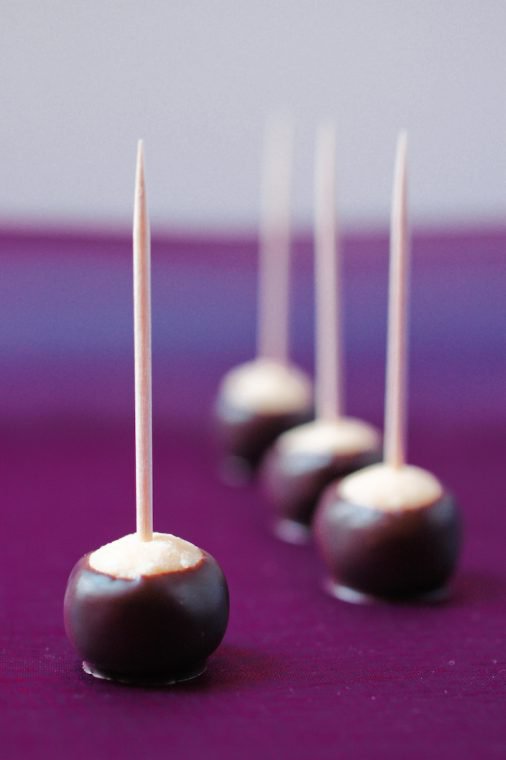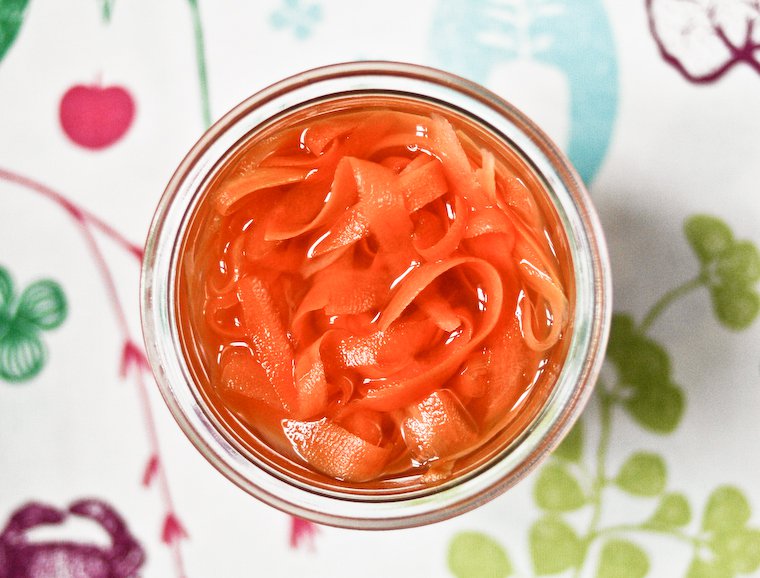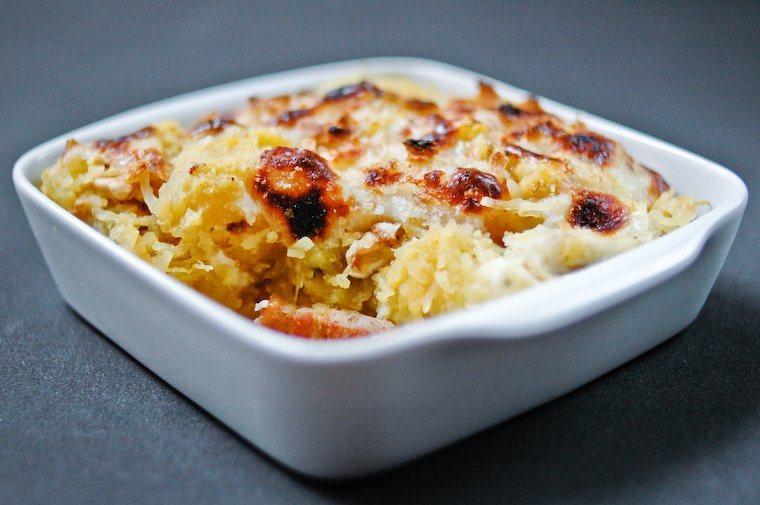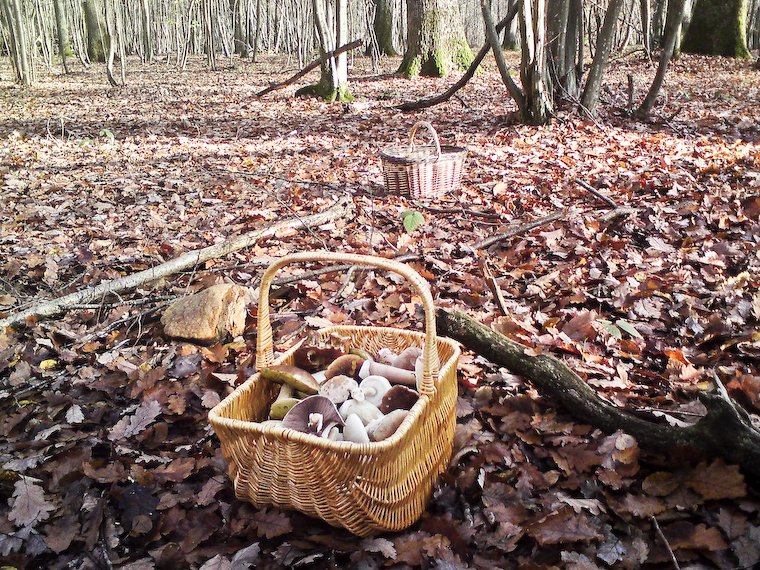Before I tell you about this amazing carrot quick pickle with ginger, I want to make sure you know this: pickling means preserving food in a seasoned brine or vinegar mixture, and in case you didn’t get the memo, pickles are the new cupcakes.
I sorta kinda doubt it — try bringing pickles to your nephew’s birthday party — but, as someone who grew up with store-bought jars of cornichons (gherkins) as the single pickled element of the family diet, I am most intrigued by the techniques involved, and the wide range of products they create.
I am a city dweller and it is unlikely that I’ll ever have the bumper crop and larder space (or, um, patience) to fill dozens of towering jars with multicolored vegetables biding their time in their sterilized bath, so the method I am most drawn to is the quick pickle: this simply consists in pouring a boiling brine or vinegar solution over pieces of raw vegetables, and letting the mixture cool to room temperature. This type of pickle keeps for about two weeks in the refrigerator, so it is usually done in small batches that you can consume within that time frame — unless you’re giving some away to well screened friends and relatives.
I am a city dweller and have neither the bumper crop nor the larder space to fill dozens of towering jars with multicolored vegetables, so the method I am most drawn to is the quick pickle.
My first near-pickling experience, long before this carrot quick pickle with ginger, occurred at my friends Braden and Laura‘s place recently, as I helped Braden prepare the quick-pickled chili peppers he was later to serve with squid ink pasta and fried squid rings. My involvement was limited to the chopping of said chili peppers, which taught me an important, though non-pickling-related lesson: you should protect your hand with a glove or a light film of oil before handling a large amount of hot peppers, otherwise you’ll wake up in the morning feeling like it’s been dipped in acid.
Scoville scale aside, I had thus been introduced to the quick pickling thing, and was ready for a re-run in my own kitchen. So when I received a copy of Pierre Lamielle’s very lovable cookbook Kitchen Scraps, the first recipe I decided to try was the carrot-and-ginger quickie pickle on page 82.
If you don’t know who Pierre Lamielle is, head over to his food blog and tell him I said hi: he’s a talented illustrator/cook with wit to spare, a definite knack for food-related puns, and a weakness for root vegetables.
His book is a collection of humorously written and illustrated recipes, and I am enjoying it more than a little. It is wacky, irreverent, and funny, yet the recipes are built on solid ground: the author went to culinary school, and this you can tell by his intermittent use of the verb “to blap,” a technical term that means sticking something in the oven without making too big a deal out of it. So it’s a book you can actually cook from, chuckling privately at the prospect of serving the bear butt-kicking granola, the whirled peas soup (give whirled peas a chance — get it?), or the angel hair conditioner pasta.
Among the recipes I’ve flagged are the bread of roses (a bread pudding with chocolate and rosewater), bruno “bloody beets” barbabietola’s beets and ricotta risotto (one of five mafia-approved risotti) and, of course, the stinking french onion soup, because that’s hard to resist.
The carrot quick pickle was indeed a breeze to make — it took about ten minutes, and I was on the phone for most of that time — and I am delighted with the result: the ribbons look terribly pretty, and we’ve been eating them as a sweet and sour condiment nested inside tuna sandwiches, as Pierre suggests, or swirled over this warm squash and bean salad, and I can see it bringing a lovely brightness alongside a hearty, brooding stew.
As for the book, it has earned its place on the special bookshelf I reserve for alternative publishing projects from Canada, right between L’Appareil and Au Pied de cochon, and when my little nephew turns 19 years old rather than 19 months old, I have an inkling he’ll get a kick out of it, too.
Continue reading »









